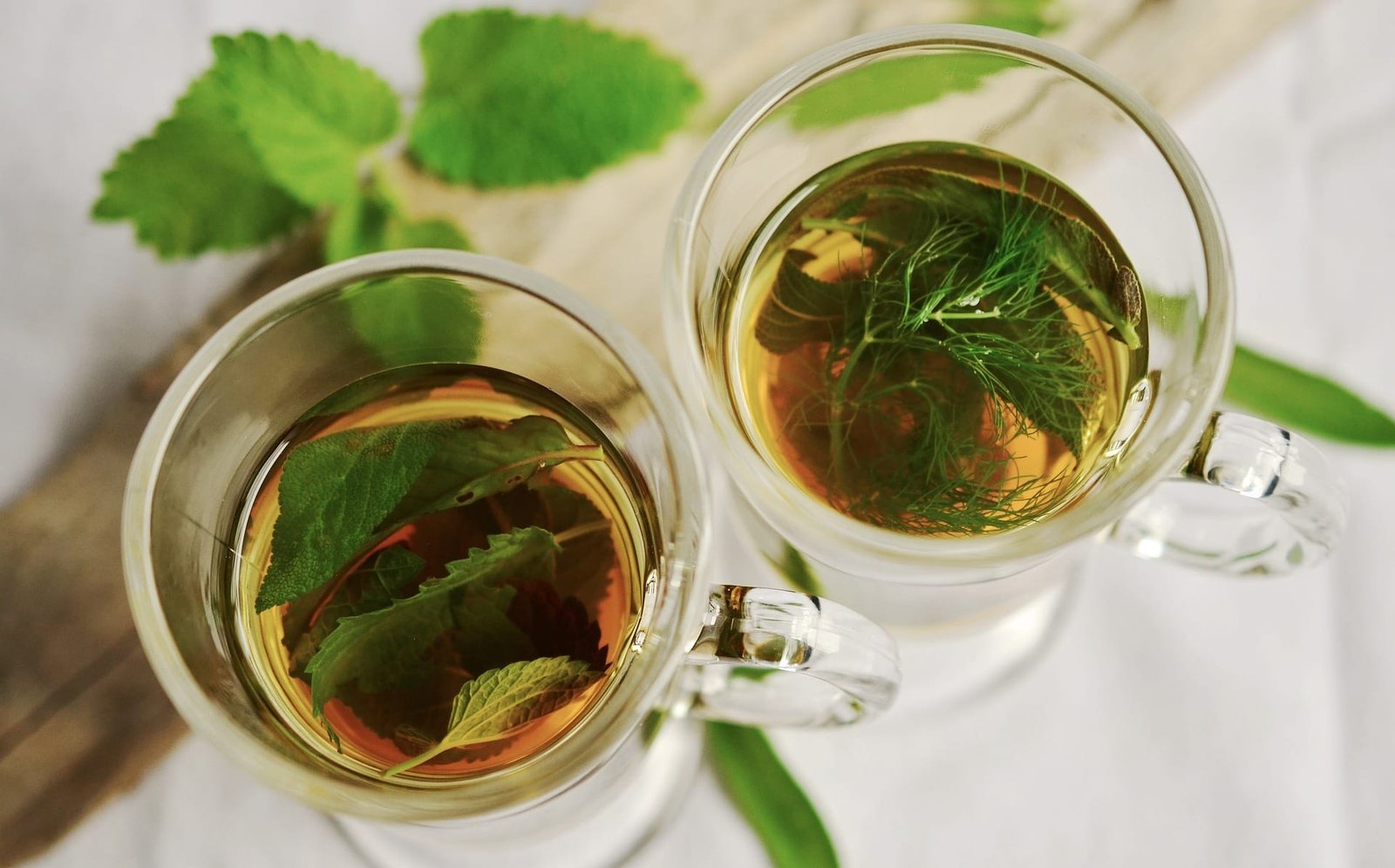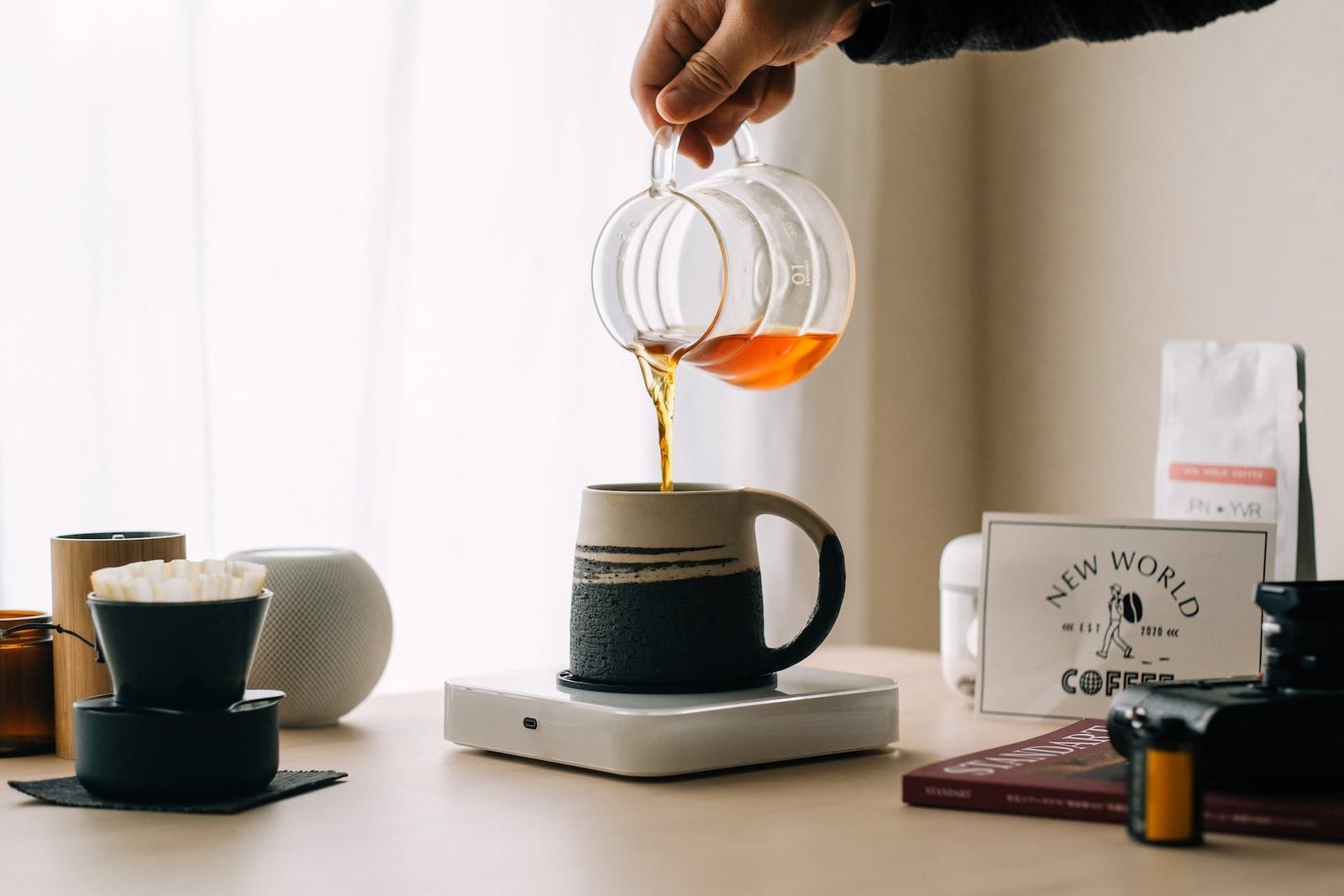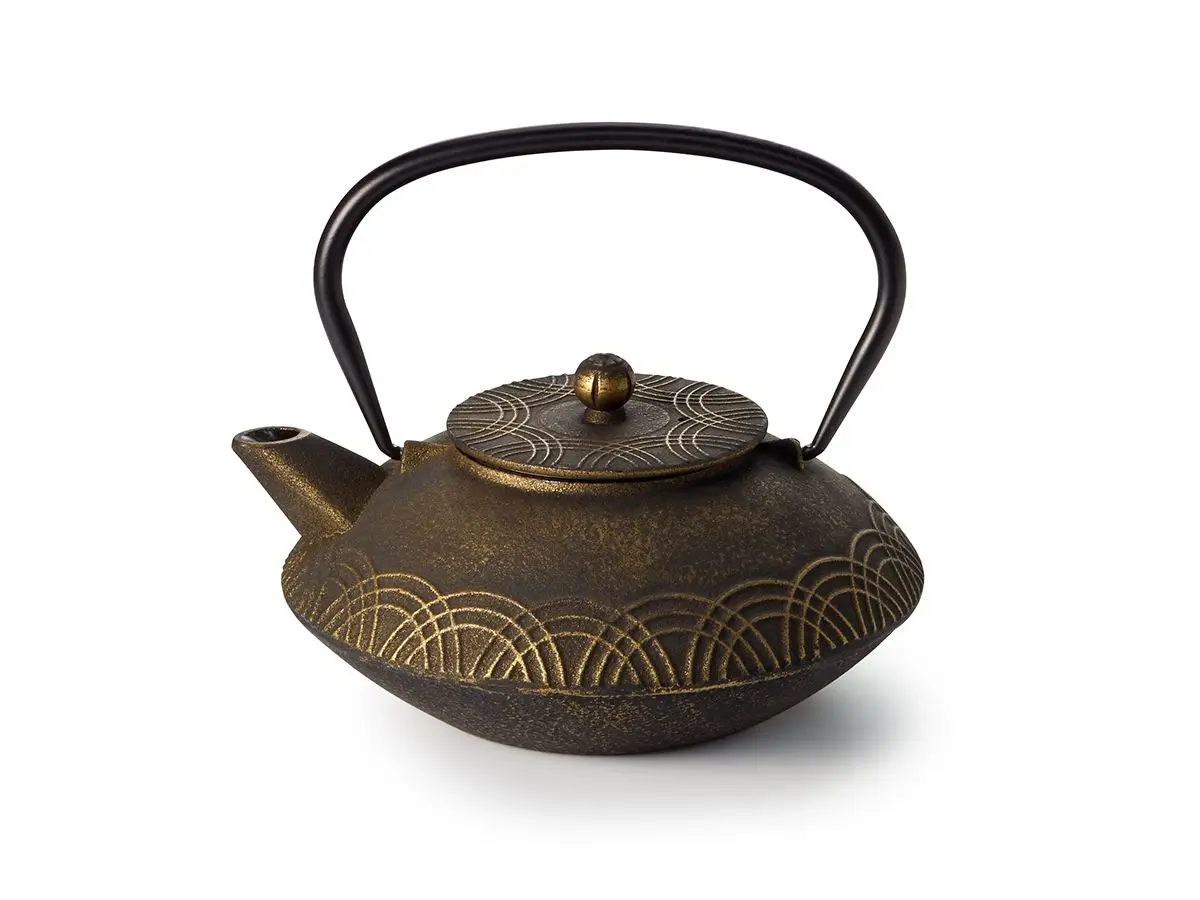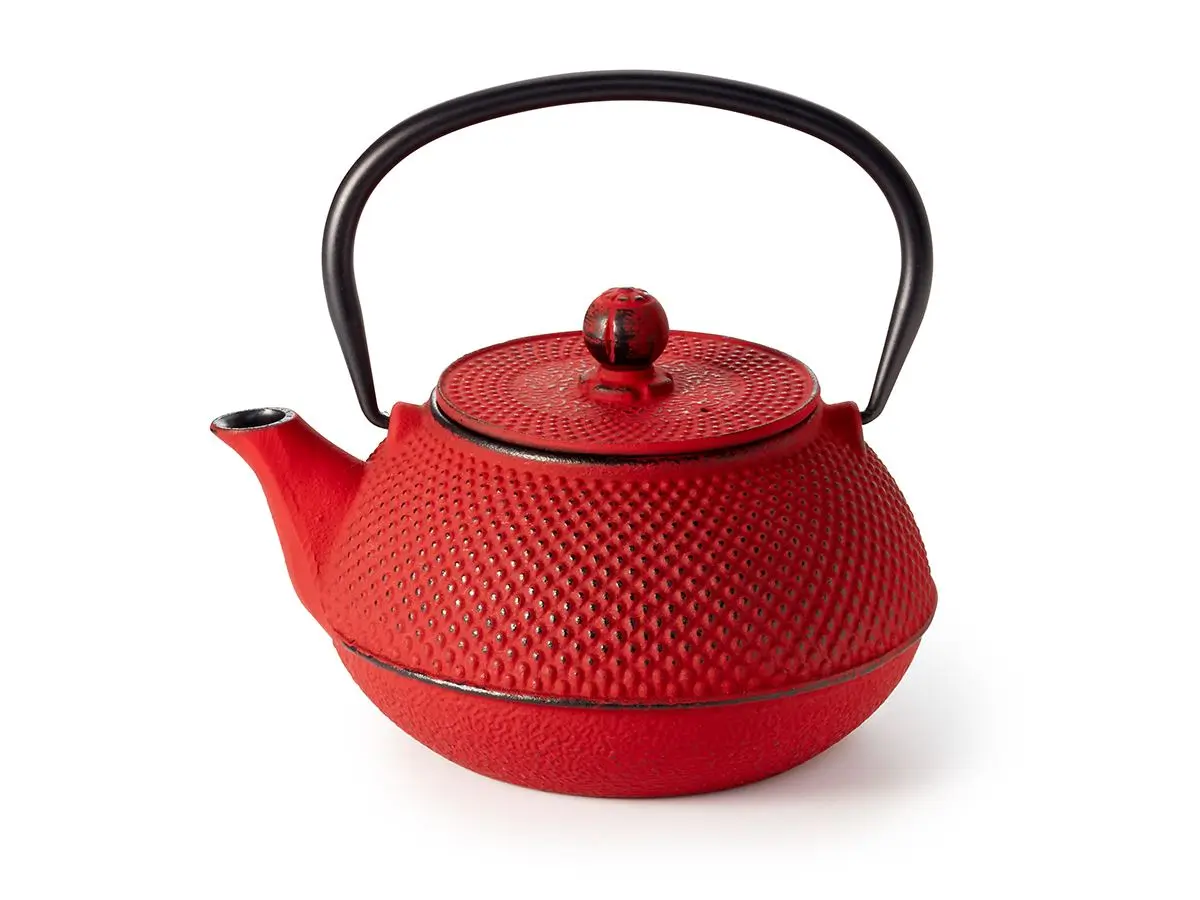You have a pack of loose leaf tea but no suitable accessories to hand and are wondering how to brew loose leaf tea without an infuser? No problem… In this article, I’ll show you some tricks on how to use everyday household objects to enjoy your tea anyway.
Good tea needs space to develop. If it soaks up water, the tea swells. In a tea bag or tea egg, the leaves cannot develop properly and therefore cannot fully release their flavor. This is why loose tea is usually placed in a tea strainer or in a pot that has a built-in filter in front of the spout. A so-called Gaiwan is also often used for classic tea, i.e. Green tea, Black tea, Oolong etc.. But more on that later. If you’re reading this article, you probably don’t have any of this at your disposal. So let’s take a look at how you can prepare your loose tea using home utensils.
Inhalt
ToggleGrandpa style: Brewing Tea directly in the Cup

This method is very simple: just put the loose tea in a cup and pour hot water over it. Over time, the tea will soak up the water and sink to the bottom. You can then drink it carefully. If leaves do end up in your mouth, it’s not a big deal: it’s perfectly safe to swallow the leaves or fruit pieces.
In fact, this method is particularly popular for classic tea and even has a name: Grandpa Style. The advantage of this is that classic teas can be brewed several times. You simply leave the leaves in the cup and pour in fresh water whenever the tea gets too strong.
If you want to avoid getting parts of the tea leaves in your mouth, you can also drink from the top with a glass straw. However, allow the tea to cool slightly beforehand to avoid damaging the straw.
Double Cup Method
With the double cup method, you also brew the loose tea in a cup first. Instead of drinking directly from this cup, you can then carefully try pouring the tea into a second cup. Most of the leaves will remain in the first cup.
If you want to prepare larger quantities, you can of course also prepare the tea in a pot and then carefully pour it into cups. However, if you don’t empty the pot all at once, you should make sure that the remaining tea doesn’t become too strong.
When pouring from the jug or cup, you can try to hold back the leaves with a fork.
Pot with Lid
This trick is based on the classic Chinese Gaiwan. A Gaiwan is basically just a porcelain cup with a lid. The lid is held in such a way that a small gap remains open between the cup and the lid, through which the brewed tea is poured. Most of the leaves stick to the lid. You can also use this method with a normal saucepan. Allow the tea to infuse in the pot and then pour off your freshly brewed tea using the lid.
Filter Loose Leaf Tea with Kitchen Utensils

If you still end up with too much tea leaves in your cup using the previous methods and would prefer to filter your tea properly, you can also use standard kitchen equipment.
Pasta Strainer
Even if you don’t have a special tea strainer, you may have a larger strainer that you use every day to strain pasta. You can place this on a pot and pour the tea from the cup or pot through it. Or try using a slotted spoon.
Coffee Filters
What has proved successful for brewing coffee also works with tea… not ideal, but it can serve as an emergency solution. The water drips very slowly through the paper of the coffee filter. With some types of tea, you can take advantage of this and steep the tea directly in the filter. Green or White teas, for example, usually need 2-3 minutes to infuse. The throughput time of the coffee filter could be long enough for this. You can try putting the loose leaf tea directly into the coffee filter and pouring hot water over them. The tea has finished brewing by the time the water has dripped through the filter.
However, for most other teas, such as fruit and herbal teas, this time is not enough. To make this work you brew in a cup or pot before you strain through the coffee filter. You will have to be patient, however, as you will probably have to pour the tea into the filter bit by bit.
Frenchpress
Speaking of coffee accessories… You can also brew loose leaf tea with a Frenchpress. After the brewing time, simply press the sieve down. However, the tea will continue to infuse, so it’s best to pour it out completely so that it doesn’t become too bitter or sour.
Tea bag
On Amazon you can get empty tea bags that you can fill yourself. These offer the tea leaves a little more space to unfold than ready-made tea bags from the supermarket. Nevertheless, these tea bags are not as ideal as a tea strainer or a special pot. However, you probably don’t have any tea bags for loose tea at home at the moment. If you’re in a pinch, you can also cut open your ready-made tea bags from the supermarket and replace the contents with a small amount of your loose tea. You can then tie the tea bag closed with a string or seal it with a stapler.
Dish Towel
If all previous attempts have failed, you can also try making your own tea bag. To do this, you can wrap the loose tea in a fresh, clean tea towel. Tie the towel so that the tea leaves cannot escape. You can then simply place your improvised “tea bag” in the pot or a saucepan for the duration of the brewing time. At the end, you can squeeze the tea in the tea towel to get the concentrated aromas out. It’s not advised to squeeze Green or Black teas though, as this will usually mostly extract a bitter taste.
Brewing Loose Leaf Tea Correctly
I hope you have been able to improvise and brew your loose leaf tea without an infuser using the tricks mentioned. So that you can enjoy your tea without any complications in the future and achieve the best taste experience, I will now show you how to prepare tea properly. I will introduce you to various accessories, depending on the type of tea and the quantity that can be prepared with them. I do not recommend brewing with bags or tea eggs. As already mentioned, the tea leaves cannot expand and develop its full flavor.
Teapot with Integrated Strainer
The best known and simplest are probably teapots with an integrated strainer. These are well suited if you want to prepare larger quantities of fruit or herbal tea. You can find some good models here:
Tea glasses with integrated strainer
Tea glasses, which are supplied with a matching strainer, are one size smaller:
Asian teapots for classic tea
For the preparation of classic teas from the Camellia sinensis plant (Green, White, Black, Yellow Tea, Oolong and Pu Erh), usually pots with a volume of 5 – 12 oz (150 – 350 ml) are used. I have written separate articles on the correct preparation of these teas, which are linked in the previous sentence. The larger Japanese “Kyusus” with a volume of up to 350ml are used for Green teas. All other teas are usually prepared in the smaller Chinese teapots. You can find some suitable teapots here:
Conclusion
I hope my article on how to brew loose leaf tea without an infuser has helped you to enjoy your tea even without the right equipment. Please let me know in the comments which method you used and which tea you enjoyed.











